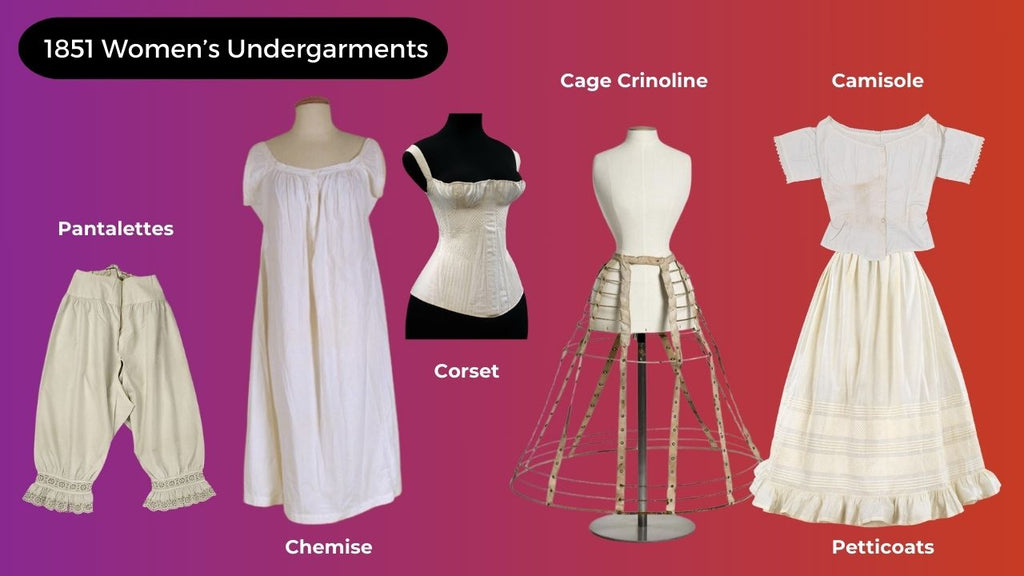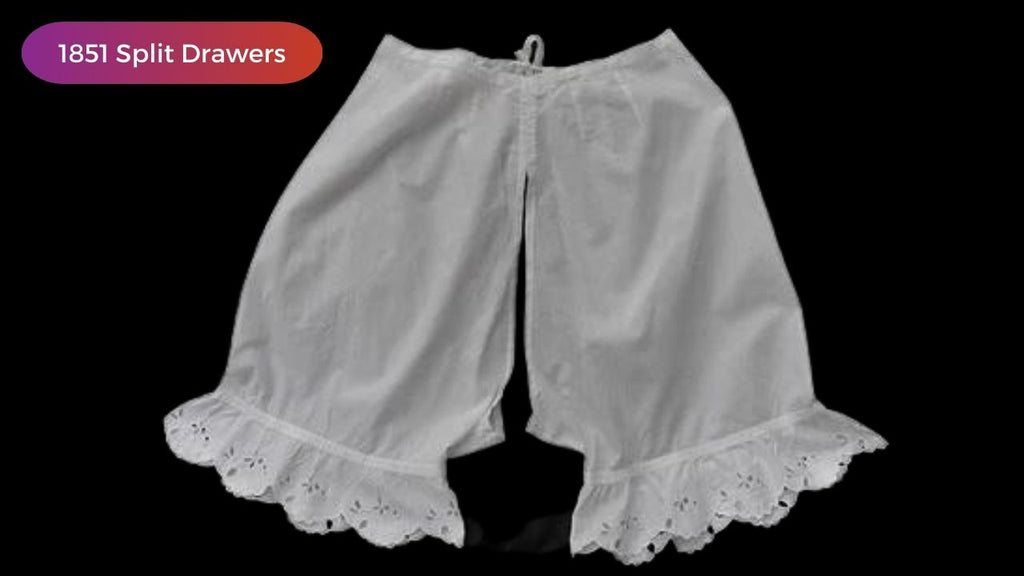The Time Traveler’s Guide to 1851: Women’s Undies Edition
If you swoon for a good period drama full of 19th century dresses, from Bridgerton to The Gilded Age, you may be drawn to acres of silk and lace. You may even be curious about the crinolines and corsets underneath, but I had to take things a level deeper.
Writing a historical novel sometimes requires the strangest of research rabbit holes, and my most recent was trying to understand—in depth—how my 1851 heroine went to the bathroom. As a writer, that means putting myself directly in her shoes—and her underwear.
Seriously, I wondered, how do you pee?
The next time you time-travel back to 1851, you may find this handy guide helpful.
What are you wearing for undergarments?
The first question I had to answer was what exactly those layers were. My favorite sources for this were the Victoria and Albert Museum, an Australian Gold Rush website, and the Jane Austen’s World Blog that are well worth a peek if you want to geek out like me on this subject.
As with today, there is no single answer for everyone on the planet, but the basics for western women were about the same. More and fancier for upper classes, less and more simple for lower. But the gist is the same.
The next time you time travel to 1851 as a woman, be prepared to don the following, in this order:
- A pair of thigh, calf or ankle-length pantalettes (usually cotton, sometimes muslin, buttoned and/or tied around your waist)
- A chemise (similar to a long cotton sleep shirt)
- A corset (hooked in front, laced in back)
- A cage crinoline (made of rope, cane, steel or whalebone)
- A camisole (A frilly shirt that covers the corset)
- Petticoats (usually cotton, but occasionally made of down-filled wool for warmth)
- And then your dress, shawl, bonnet, and boots, of course.

Beware, though. You’ve now built up a skirt so wide you may have to force it through a standard doorway. And don’t forget, if you want warmth or cooked food, you will spend much of your time near open flames, with ground-level skirts that radius out from your body by a foot or two. So take care not to back yourself too close to the fire. Yikes.
Yes, but how do you, you know…?
According to the Cleveland Clinic, the average person urinates seven or eight times a day. So assuming basic biology hasn’t changed drastically in the past couple centuries, how do you deal with all those layers of clothing covering your nether parts?
Well, now we come to the fun part.
You don’t.
Because your pantalettes (aka drawers, knickers, bloomers, smalls) have one very important feature—they’re made of two pieces. Split drawers. One for each leg. It’s why you still buy a pair of underwear.
But if they only connect at the waist, then…
Yes, my friends. Your pantalettes are crotchless.
If you want to fit in at Queen Victoria’s court or in Gold Rush San Francisco, you’ll be rocking some seriously saucy undies. It’s the only way to go. Pee through your clothes.

Here’s a fun short video by costume historian Bernadette Banner that covers the basics so you can prepare yourself:
What toilet facilities are available?
I’ve got a little good news/bad news for your time-travels. By 1851, flush toilets exist but they’re hardly mainstream, so you must prepare yourself for chamber pots and outhouses to be the standard. Even in the city, you’ll find them in a building’s courtyard.
If you’ll be staying at a 5-star estate or hotel, good on you. You’ll likely have an elegant wooden cabinet to conceal your silver or porcelain chamber pot right in your room—which will be discreetly emptied by your maid. But since wood is a sponge for odors, yeah, it’s gonna stink.
Of course, if you’re taking a spin around the gardens, there are plenty of bushes to take a squat behind.
You may find yourself invited to a ball or gathering, where you will surely be served shocking levels of alcohol. Now what?
Not to worry. A cloakroom, retiring room, screen, or curtain will be made available and a portable chamber pot called a bourdaloue will be handed to you by a servant.

And how do you clean up?
If you’re time-traveling first class, you’ll have a few pieces of cloth or rags to clean yourself, and—in Europe—a bidet comprising a wash basin and sponge.
If you’re going coach, you can hope for some leaves, corncobs, or pieces of leftover newspaper—or you may be left to your own devices.
What you probably don’t have in either case is toilet paper. The first TP has just come on the scene but isn’t common, and would be unrecognizable to your modern eyes. For one thing, it comes in sheets, not rolls. And for another, well, splinters are a pretty big issue.
Cloth for me, thanks.
If it’s that time of the month, of course, you’ll need to bring your sanitary belt to hold folded rags in place since your crotchless panties are going to be no help in that regard.
As for washing your hands, I’m afraid you’ve come to the wrong century.
Happy travels.

